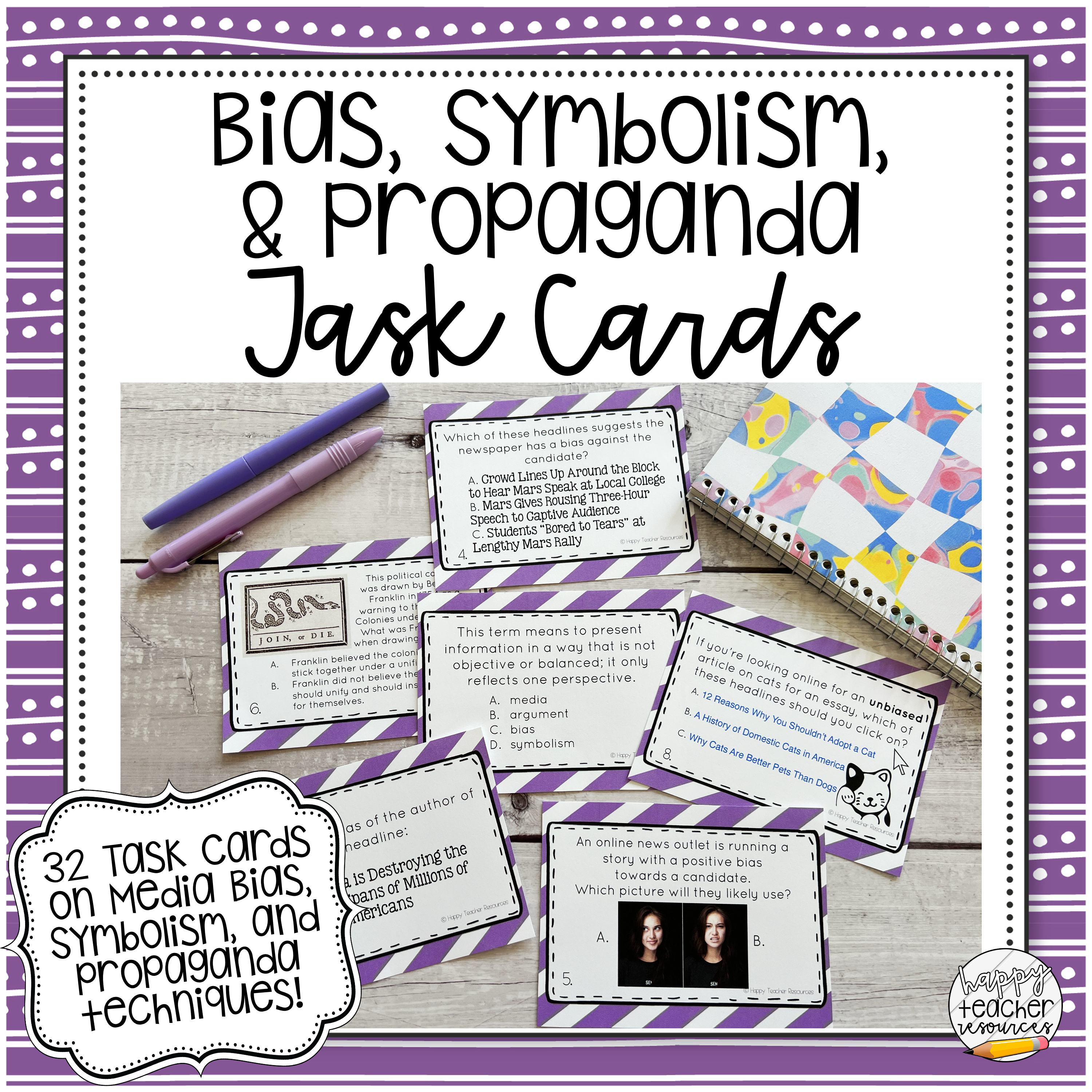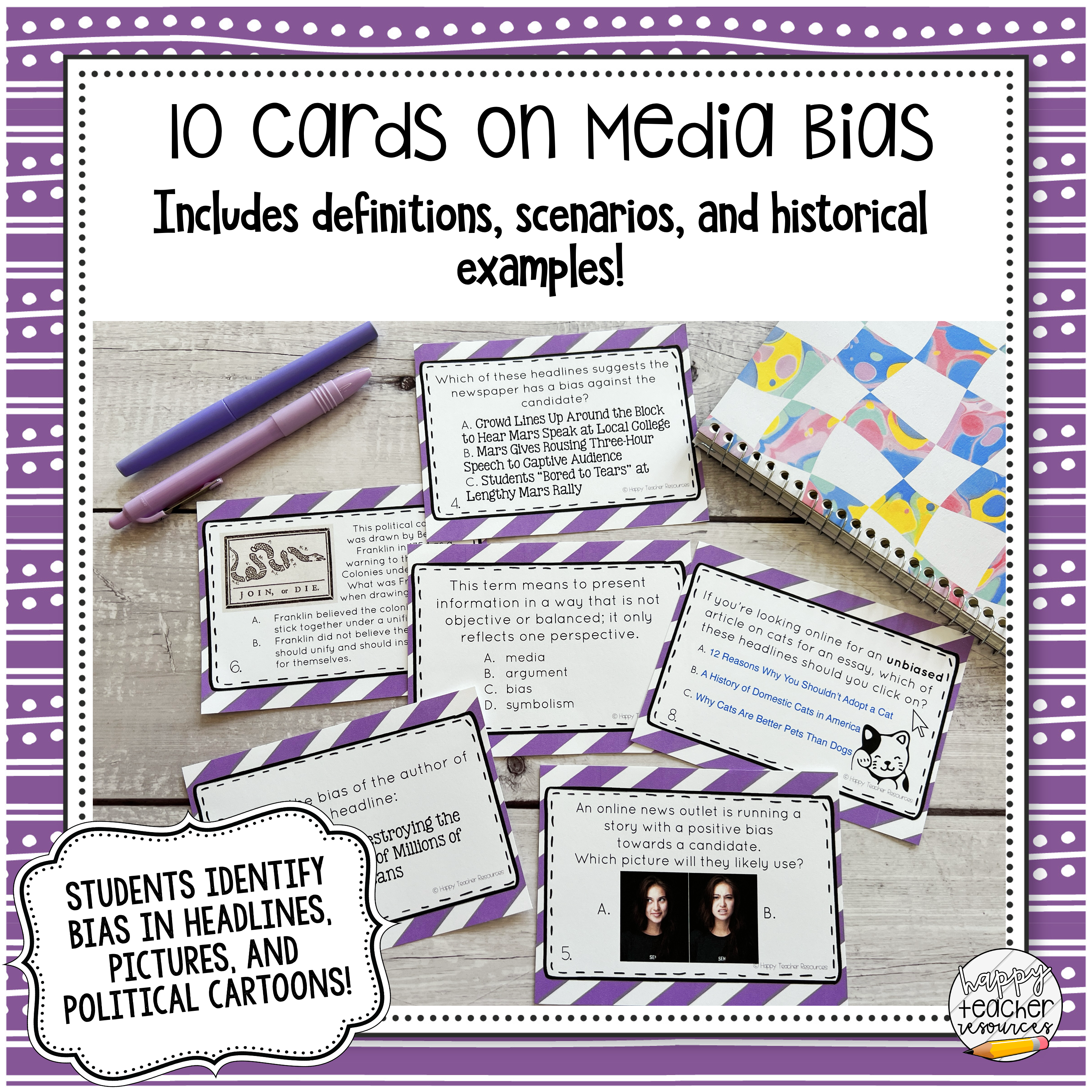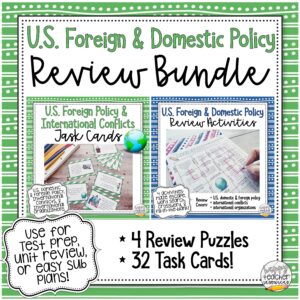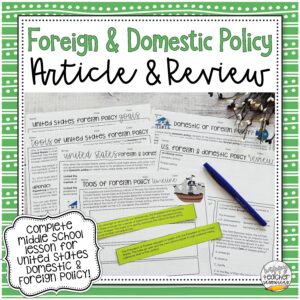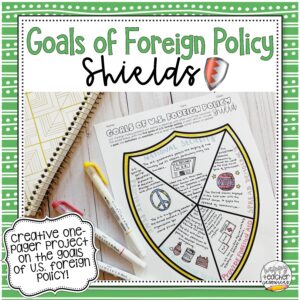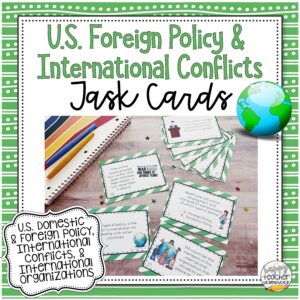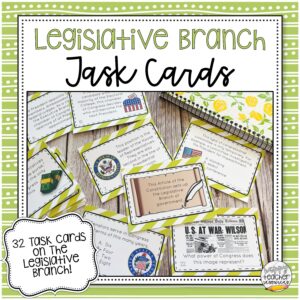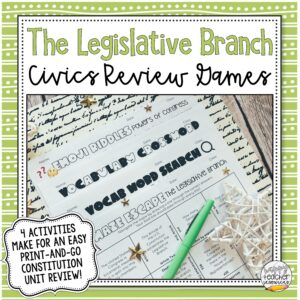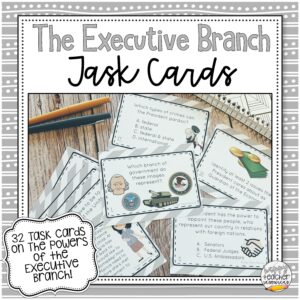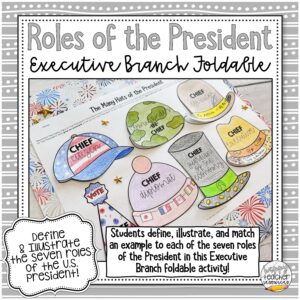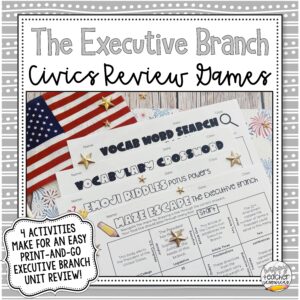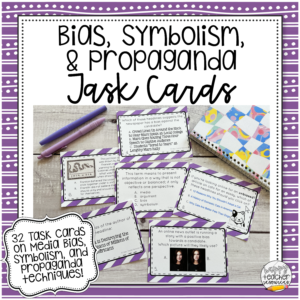This set of Civics Task Cards: Media Bias, Symbolism, and Propaganda includes 32 task cardsthat quiz students on the vocabulary and key concepts surrounding media bias, symbolism, and propaganda techniques in United States elections. Students will review vocabulary, analyze pictures, political cartoons, and propaganda posters, and engage with both hypothetical and historical scenarios as they review these key concepts! Perfect for middle school Civics, American History, and American government students.
This review activity is aligned to the following Florida State Standards for 7th Grade Students (but applicable to other states as well!):
- SS.7.CG.2.9 Bias, Symbolism, and Propaganda
These task cards are numbered and come with an Answer Key and a two-sided Student Response worksheet so kids can log their answers! Students can use this as a one-on-one review for extra practice, or you can engage the whole class in a game of Scoot!
This resource also includes a digital version in the form of a self-grading TPT Easel Assessment! Assign directly to your Google Classroom, or generate a link to share with your students through email or your school’s LMS!
This set of 32 task cards includes:
✯ 10 Task Cards on Media Bias
- Students identify bias in various examples, including news stories, newspaper and online blog headlines, photographs, and political cartoons.
- Questions also mention the media as the government’s “watchdog,” and use the Watergate Scandal as an example.
- Vocabulary definitions, multiple choice, and picture analysis!
Questions include:
- This term means to present information in a way that is not objective or balanced; it only reflects one perspective. (Bias)
- Which of these headlines suggests the newspaper has a bias against the candidate?
A. Crowd Lines Up Around the Block to Hear Mars Speak at Local College
B. Mars Gives Rousing Three-Hour Speech to Captive Audience
C. Students “Bored to Tears” at Lengthy Mars Rally
(C)
✯ 10 Task Cards on Symbolism, particularly in U.S. Elections
- Students define symbolism and identify various symbols in images and propaganda posters.
- Questions include multiple-choice and short written responses!
Questions include:
- This word means to use a symbol, (such as an object, color scheme, or specific imagery), to depict a larger idea or quality. (Symbolism)
- If a political candidate wanted to take a campaign photo that symbolized their commitment to small businesses, which of the following images would they most likely pose in front of?
A. A local restaurant
B. A mountain vista
C. An American Flag
D. Their childhood home
(A) - Name three common symbols that represent America. (Think about images, colors, landmarks, or animals that represent patriotism, liberty, and freedom.) (Answers will vary: Red, White, and Blue; American Flag; Statue of Liberty; Liberty Bell; Bald Eagle)
✯ 12 Identifying Propaganda Task Cards
- 12 cards on propaganda techniques, including: card-stacking, testimonial, fear appeal, bandwagon, transfer, name-calling, plain folks, and glittering generalities
- Includes multiple choice, vocabulary definitions, and picture analysis!
Questions include:
- In this propaganda technique, a politician might use a clever, catchy slogan that is pretty, positive, but ultimately conveys little information. (Glittering Generalities)
- “Everyone else is doing it, so you should, too!” is the main idea behind this propaganda technique, in which people are encouraged to vote for a candidate, buy a product, or engage in a behavior in order to fit in or maintain the status quo. (Bandwagon)
Two versions are available: a colorful set with a purple background, and an ink-saving black & white set. An Answer Keyand optional Student Response Sheet are also included.
This resource comes as a non-editable, printable PDF with an Answer Key, and as a digital version through TPT Easel. Use these task cards as a self-grading assessment — great for review, or as a unit quiz! You can assign TPT Easel digital activities directly to your Google Classroom, or share with students via a web link.
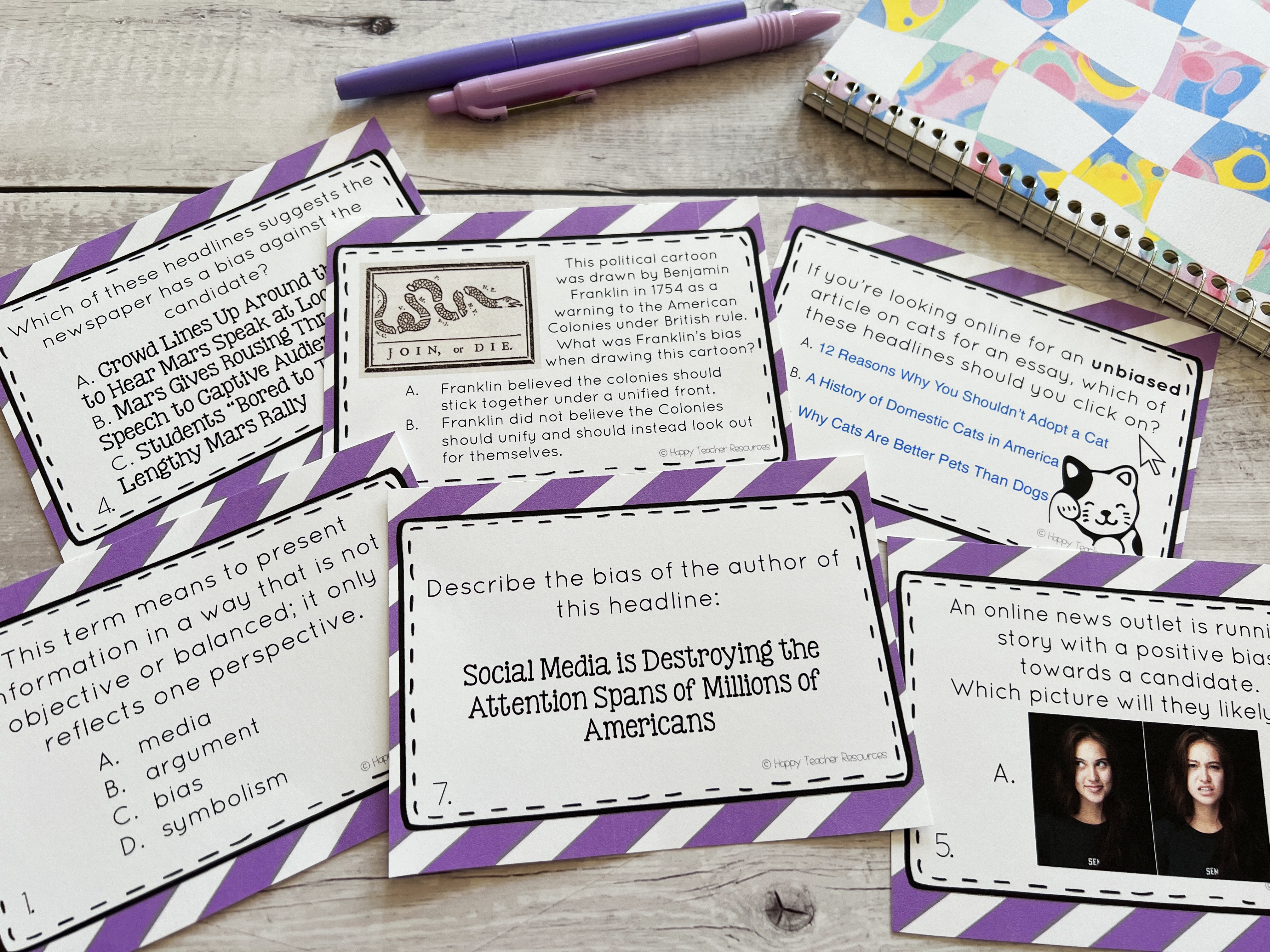
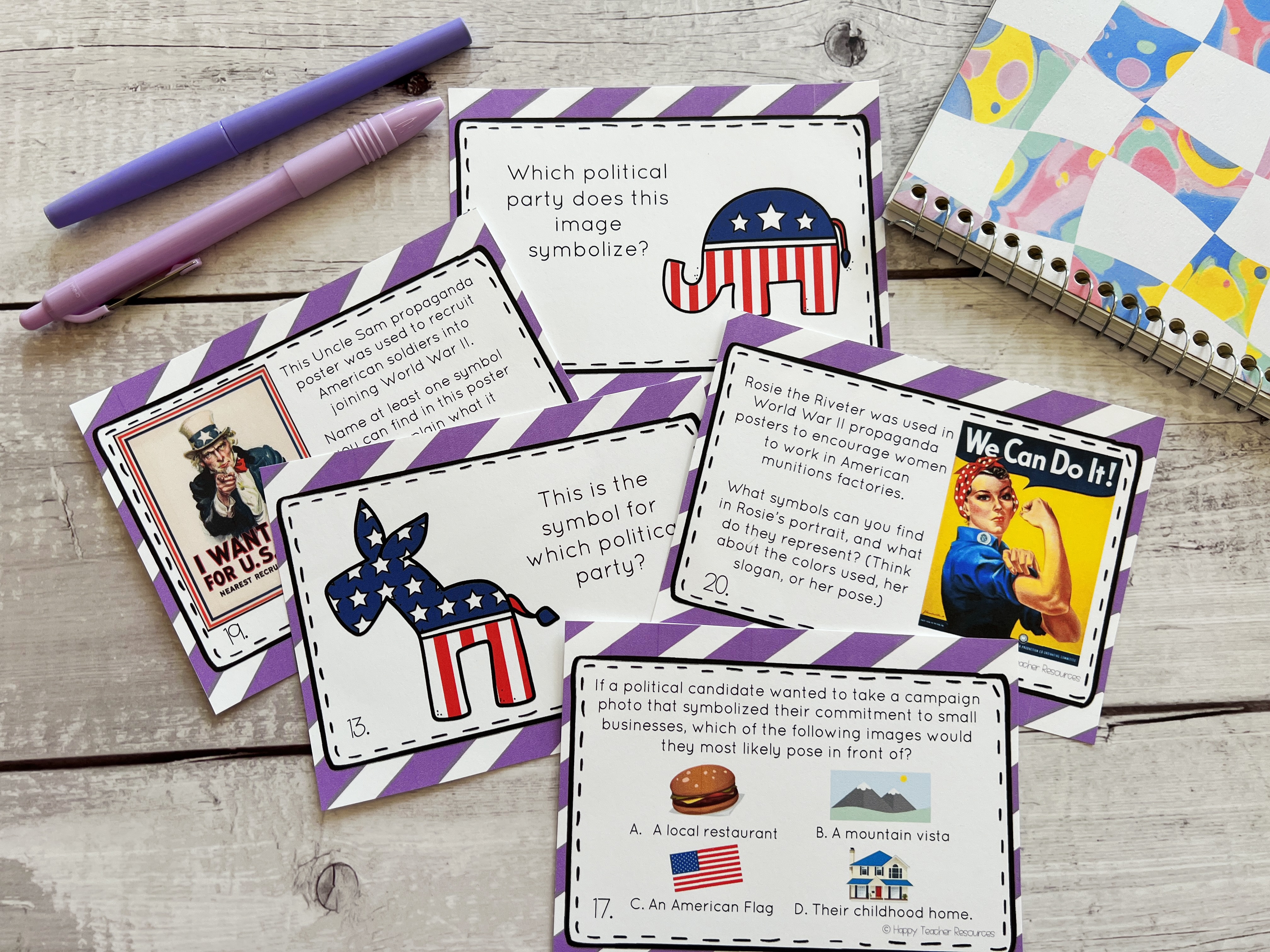
More Happy Teacher Products You Might Enjoy:
✩ Detecting Bias: Media Literacy & Bias Digital Google Slides Activity for Civics
✩ Detecting Media Bias Article & Review Activities for Civics
✩ Identifying Propaganda Techniques | Worksheet for Civics & American Government
Become a happy teacher — join the email list!
Never miss a new product or a sale by signing up for an email subscription! I send periodic emails recapping new products, updates, and upcoming sales. Plus, you’ll get a free week of Civics Bell Ringers just for signing up!
Enter your email below to get started.
You can also follow Happy Teacher Resources on social media: Instagram | Facebook | Pinterest

